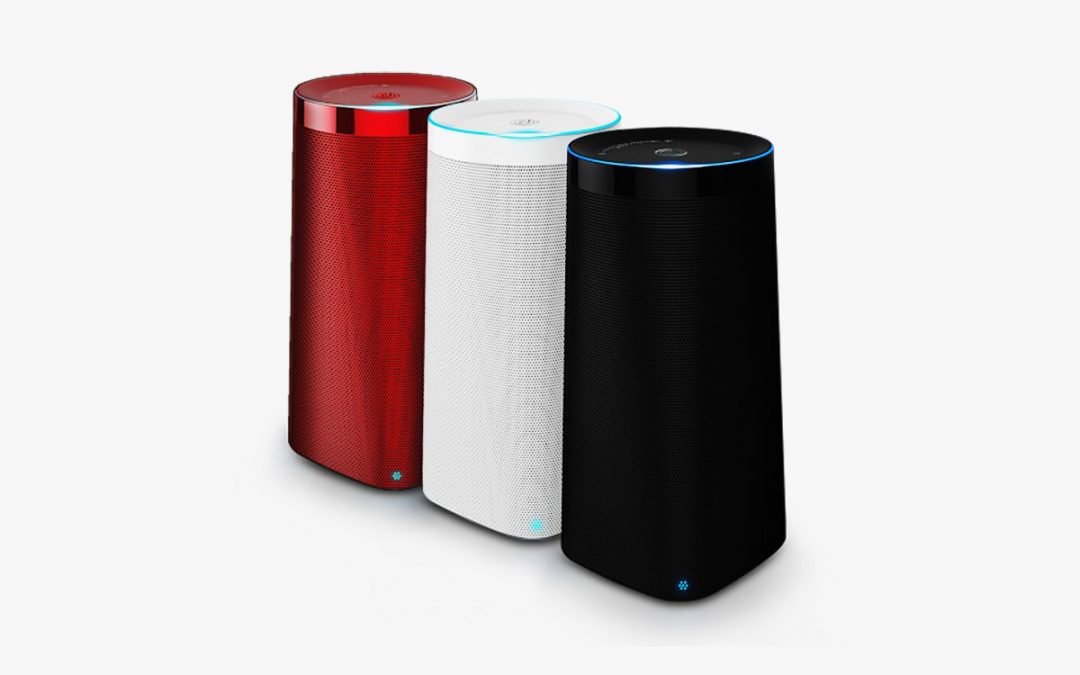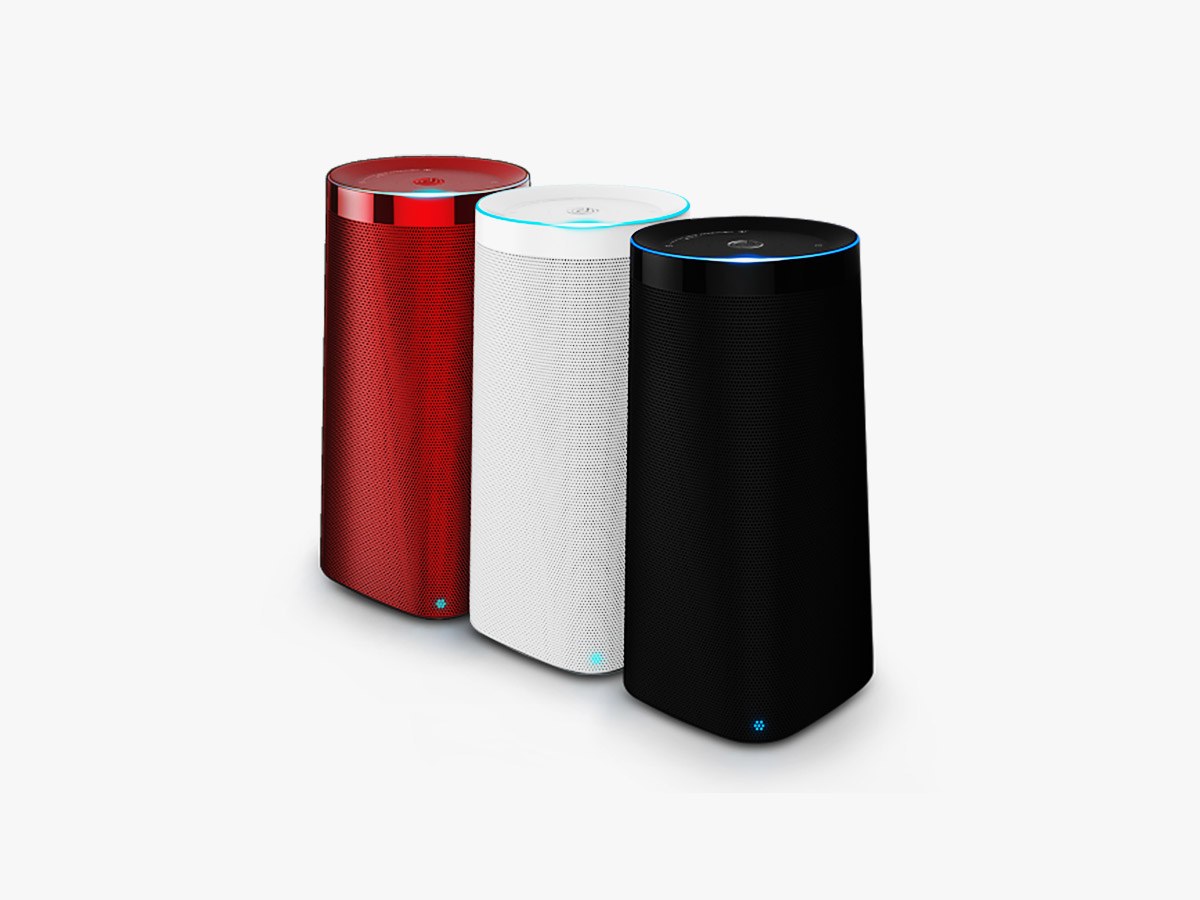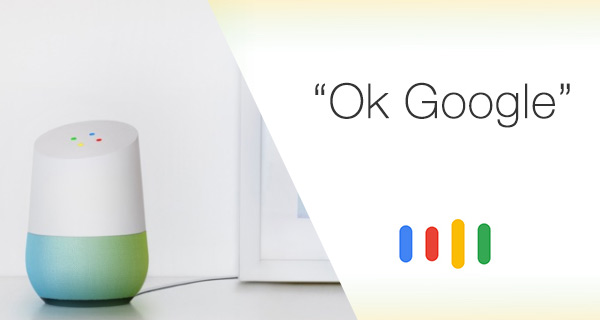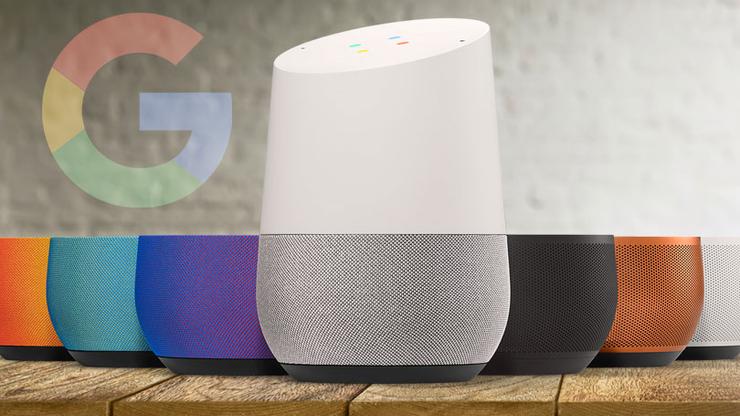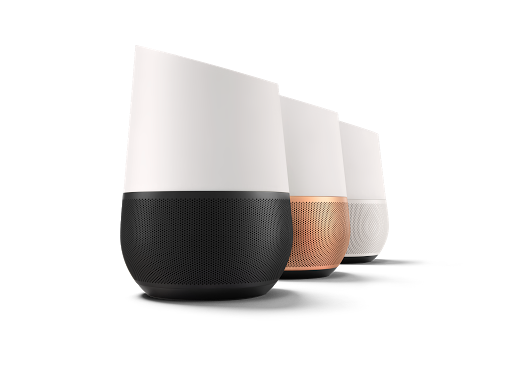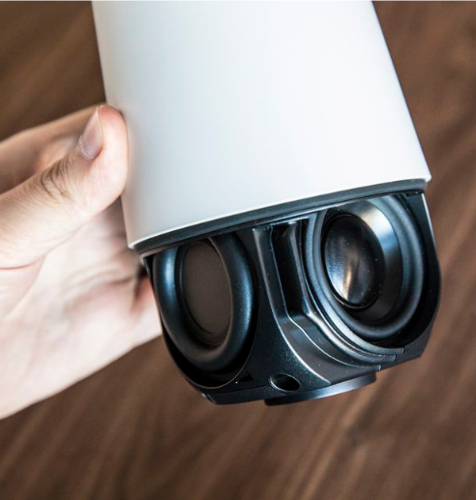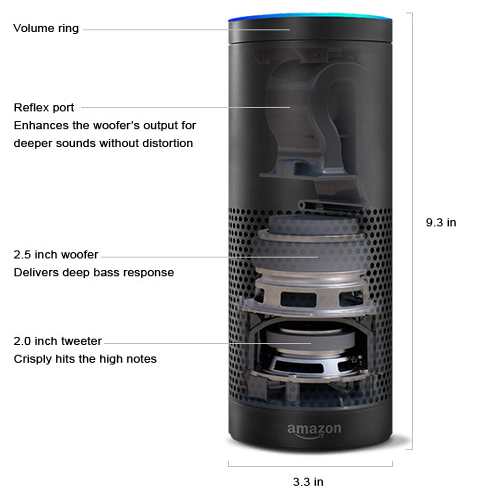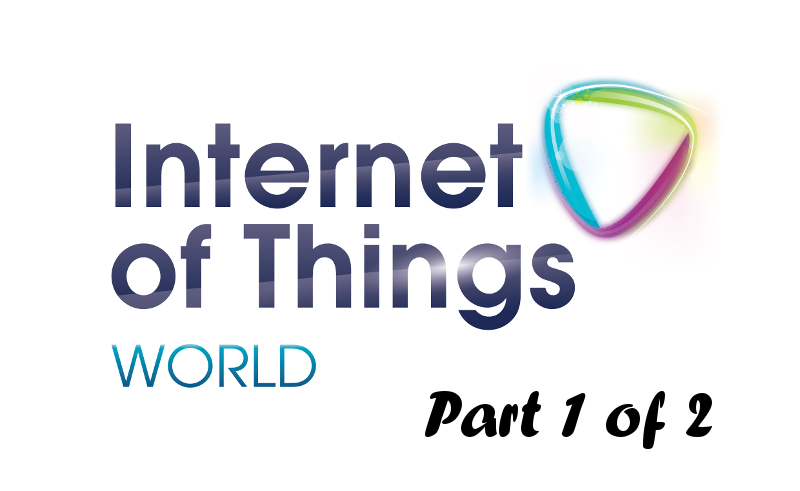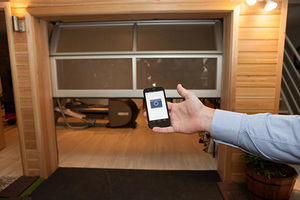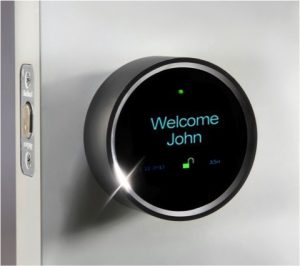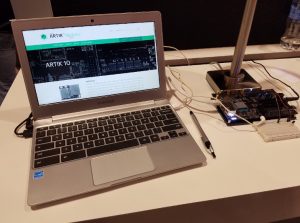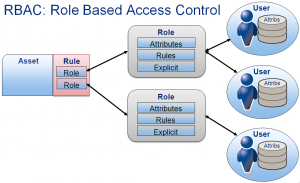
by George Pamboris | Nov 24, 2016 | Voice Control
With Google Home entering the VCD (Voice Command Device) market, people assumed that there will be a rivalry between Google and Amazon. Out of the blue a third competitor entered the stage out of China. This device named “Ling Long Ding Dong” (name is for real) will address the Chinese VCD market.
The DingDong, which costs the equivalent of $118, provides news, weather, and stock updates. It answers questions, manages schedules, provides directions, and plays music and audiobooks. It is the first product from Beijing LingLong Co., a $25 million joint venture between JD.com, China’s largest online retailer, and voice recognition powerhouse iFlytek.
The gadget weighs about 3 pounds and stands 9.5 inches tall. It is circular at the top and square on the bottom, and available in white, red, black, and purple. The shape symbolizes tiānyuán dìfāng—the notion that “heaven is round, Earth is square,” a concept that Liu says is central to LingLong’s design language. The colors also are imbued with meaning; white is associated with purity, and red with prosperity.
Three commands wake the device: DingDong DingDong, Xiaowei Xiaowei (a girl’s nickname), and BaiLing BaiLing(skylark). The DingDong comes in Mandarin and Cantonese versions (the engines required to understand the languages are too complex to include them both in one device). Most people speak Mandarin, and the myriad accents and dialects present a Herculean challenge. Still, the company claims the DingDong understands roughly 95 percent of the population.
The company will have their own skill market place, which will include applications and skills for home automation.

by George Pamboris | Nov 18, 2016 | Voice Control
Microsoft announced the shutdown of their datamarket place as you can see in that email. One of their services being used in smart home deployment is their TTS (Text to Speech) service allowing smart homes to announce events using voice options in different languages and genders.
This service was free of charge for up to 2.000.000 characters, which was more than enough for the most common smart homes. Anything beyond 2M was reasonably priced, if needed.
This Microsoft TTS service became very popular when Google implemented CAPTCHA (a program or system intended to distinguish human from machine input, typically as a way of thwarting spam and automated extraction of data from websites) resulting in no longer having the capability to announce events using voice in smart homes from Google.
There are other options like Mary TTS, FreeTTS, Acapela, etc, where you can install a local TTS server at your home to replace a cloud based TTS service. However, not everybody has the skills and knowledge to install and maintain a local TTS server. The benefits of having a local TTS server are being independent and even if your internet connectivity is down, you still get voice announcements for your smart home events.
VoiceRSS is another cloud based option offering up to 350 requests per day at no cost. With an average of ~45 characters per request x 350 requests per day x 30 days per month = ~500.000 characters compared to Microsoft’s 2.000.000 characters per month service.
However, quality of voice is another aspect to consider. There are plenty of TTS services out there and THE biggest complaint about those is the robotic sound of those voices or even worse not being able to understand sentences, while understanding single words. This is a huge challenge, as you want a smart home to sound like a smart home and not like a robot from the 70s.
This will be an interesting market to watch and more options will arise in the future, but for now people are looking for alternatives to Microsoft’s TTS service given that it is being shut down March 31st 2017.

by George Pamboris | Oct 9, 2016 | Voice Control
Google finally revealed more details around their Google Home assistant product on Oct 4th 2016. They also allow now pre-orders to be placed for their official release date of Nov 4th 2016.
Google is now entering the Voice control market, after they announced earlier this year working on an “Alexa like product but much better”. At the Oct 4th 2016 Google event, where Google announced a variety of new products and product refreshes, they provided a detailed insight into the new Google Home product line.
Let’s go over their major features and functions announced for Google Home. The appearance is the first item Google addressed by offering a variety of textures and colors to chose from. Amazon Echo is also available in white now and so will be the Echo Dots, when they are released October/E 2016.
Here is a video from Google demonstrating some use cases for Google Home. Check it out.
A very important part of any voice assistant product line is their interoperability with “smart devices”. Alexa from Amazon has a huge head start, but Google is now starting and investing heavily in this area as well. Here is a comparison chart between Google Home and Amazon Alexa.
Google Home
$130
- Always listening
- Command acknowledgement
- Shopping List
- Music Streaming
- Smart Home integrations (Nest, Hue, IFTTT, Smartthings)
- Direct Music stream to different rooms via App: Yes
- Direct Music stream to different rooms via Voice: Yes
- Group Music stream on multiple Google Home devices: Yes, using Google Cast
- Attach external speakers via Bluetooth: No
- Attach external speakers via Direct-In cable: No
- Connect mobile phone via Bluetooth (A2DP): Yes
- Conversational commands: Yes
- Spatial Perception (nearest device responds): Yes, starting Nov 2016
Amazon Echo
$180
- Always listening
- Command acknowledgement
- Shopping List
- Music Streaming (Prime Music, Pandora, TuneIn, iHeartRadio, Spotify and Amazon Music)
- Smart Home integrations (Nest, Hue, IFTTT, Smartthings, Wemo, Insteon, TP Link, Ecobee and many more through skills)
- Direct Music stream to different rooms via App: Yes
- Direct Music stream to different rooms via Voice: No
- Group Music stream on multiple Alexa devices: No
- Attach external speakers via Bluetooth: No
- Attach external speakers via Direct-In cable: No, but Echo Dot supports this
- Connect mobile phone via Bluetooth (A2DP): Yes
- Conversational commands: No
- Spatial Perception (nearest device responds): Yes, starting Oct/E 2016
The Google Home Speaker seems impressive around all corners and in all directions. Once the product is released more detailed sound comparisons can be conducted.
The Alexa Speaker has proven to be quite impressive in terms of sound quality and base waves. Given the size of that product, the sound it produces is quite excellent.
In summary:
Google is releasing a major competitor to Amazon’s Echo Alexa family. It lacks in some areas, while it has an advantage in other areas. In the end the ease of use, the integration and interoperability options will drive customer adoption. In either way, competition in the market place is always good because it benefits the end consumer… us!
Disclaimer: This blog and tweets represent my own view points and not of my employer, Amazon Web Services.

by George Pamboris | May 12, 2016 | Lock, Motion and Security, Voice Control

Internet of Things World 2016 was the 3rd annual event hosted at the Convention Center in Santa Clara CA. With over 10.000 attendees and over 200 exhibitors you were able to attend a total of 15 dedicated tracks around IoT ranging from manufacturing to smart cities, connected cars, the smart home, healthcare, energy & agriculture, supply chain & logistics plus much more. This is the first of a two part report focusing on “The Smart Home” track from this event.
This report will cover new upcoming technologies, expert opinions shared at panels from various industry experts and interesting startups to look out for in the coming near future.
 A new study on year 2015 analyzed the usage of smart devices and the results are pretty interesting. The most “used” smart devices of year 2015 was the “smart garage door”. The smart garage door opener concepts implemented are ranging from adding Z-wave relays and tilt sensors to their existing home automation hub, to adding “connected” garage door openers which connect to existing home automation hubs, to independent systems with simple apps on customers’ phones, to the latest trend which is Alexa (Amazon Echo) connected garage door openers.
A new study on year 2015 analyzed the usage of smart devices and the results are pretty interesting. The most “used” smart devices of year 2015 was the “smart garage door”. The smart garage door opener concepts implemented are ranging from adding Z-wave relays and tilt sensors to their existing home automation hub, to adding “connected” garage door openers which connect to existing home automation hubs, to independent systems with simple apps on customers’ phones, to the latest trend which is Alexa (Amazon Echo) connected garage door openers.

The second most used device in year 2015 was the smart door lock. The trend for those devices is going towards ease of installation. People are shying away from having to take apart the whole door lock mechanism and replace all the guts of a door lock, to install a brand new smart door lock. The customers are leaning towards removing two screws and adding on a new smart door lock leaving the existing locking mechanism in place.
Interestingly enough, the Bluetooth managed door locks did not get the expected market adoption and instead WiFi or Z-wave door locks dominated the market. It was great to hear that “Alexa connected” was not a trend as Amazon’s Echo does voice recognition and not voice authentication which are two completely different things.

Two discussions evolved in regards to voice control of smart homes. The first one was the difference between voice recognition which is a device understanding what you are saying and executing the command versus voice authentication, where the device doesn’t care what you say but instead the devices recognizes that you are really you and not somebody else.

The second discussion about voice control was around cloud based vs offline voice recognition. On this subject the opinions were shared across the audience, that nobody wants to loose voice control over their smart home just because their internet provider has gone offline. The voice control service should always be available with the house being online or offline.

Amazon Echo aka Alexa only functions in online mode of the house. Samsung showcasing their new Artik technology at this event, had their Artik 10 device powered by Sensory as a demo. This device works in offline mode of the house and executes voice commands just like Alexa. The Artik 10 just started selling on DigiKey and is already sold out and now on back-order. Details on Artik can be found under http://www.artik.io
At $150 for the Artik 10 the price is more than double the price of a Raspberry PI 3 Ultra Kit. Supported OS versions are Fedora, Snappy Ubuntu Core and Samsungs Tizen. More importantly Artik 10 supports Z-wave, ZigBee and Brillo with Bluetooth Mesh and Weaves coming this year. Adding those protocols to Raspberry PI 3 will certainly increase the price significantly. The expectation of people is that comparisons will be made but one major advantage of Raspberry PI over Artik 10 is their developers network. Artik will launch their Apps platform for developers within 3 months from today and people are already lining up to join that initiative. Artik will charge a developer fee just like Apple does to join their Apps platform.

As a live demonstration the Samsung Artik team showed a robot being voice controlled by their sensory voice control chip running on the Artik IoT framework. They also showcased a security system which included a home automation controller hub, motion sensor, etc all being controlled by Artik.
The same issue applied here in terms of voice recognition versus voice authentication. With that said the industry is aware of that problem and a variety of companies are already talking about on how to address that issue. One company joined a panel discussion on smart homes and addressed this exact problem with their software by focusing on voice authentication.
Talking to that company called Knurld was very interesting as many voice authentication solutions require a certain length of words or phrases being spoken before a person can be positively identified. The most common length for this procedure is about 10 to 15 seconds. However, in the smart home world the average length of any command set is about 3 to 4 seconds max which is what Knurld is targeting. Another aspect is voice training of the software to enable any voice authentication which can be quite lengthy where Knurld requires 30 seconds of training. Details on Knurld can be found under http://www.knurld.io
Companies like Google, Amazon and other voice recognition focused companies will tackle this sooner than later as customers’ demands drive innovation. A discussion with an Amazon Echo developer went into the right direction and hopefully find its way to their product enhancement list.

The discussion was around voice authentication and authorization. The concept of Role Based Access Control (RBAC) is very well known in the IT (not IoT) world but not so much in the voice control world… yet. The use case around this became obvious where the home owner defines certain roles and maps household members to those roles.
As an example the husband and wife have superuser rights while the kids are only allowed to use certain devices mapped to their roles. Guests at home are only allowed e.g. to control lights and nothing else. This is where the future should be going combining voice recognition with voice authentication and then voice authorization.
More to come in part 2 of this IoT World report. Stay tuned.
